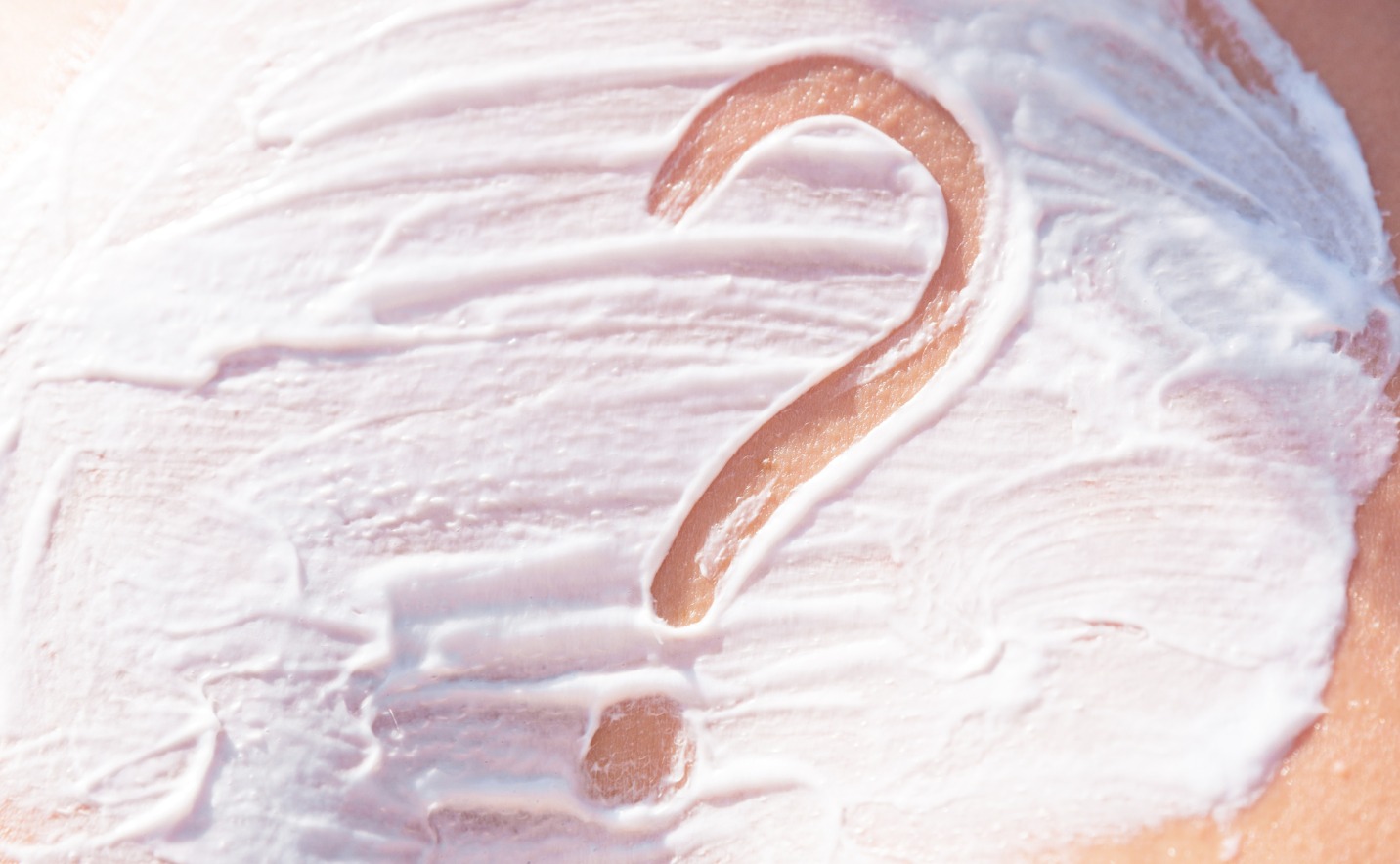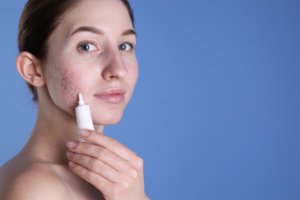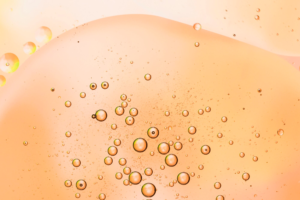
Adapalene has gained widespread recognition in the skincare world as a powerful tool for managing acne and improving overall skin health. Its status as a third-generation retinoid and its availability in both over-the-counter and prescription formulations have made it a favorite among dermatologists and skincare enthusiasts alike. Whether you’re new to retinoids or exploring advanced skincare options, understanding Adapalene’s properties, benefits, and usage is essential.
This blog takes an in-depth look at Adapalene’s role in skincare, how it works, and why it’s an essential part of many skincare routines.
What is Adapalene?
Adapalene is a synthetic retinoid derived from Vitamin A. It’s primarily known for its effectiveness in treating acne, but its benefits extend beyond that. In skincare, Adapalene works by regulating the lifecycle of skin cells, clearing pores, reducing inflammation, and stimulating collagen production.
Adapalene stands out because of its stability and its ability to selectively target specific skin receptors, reducing irritation compared to older retinoids like tretinoin. This makes it ideal for individuals with sensitive or acne-prone skin.
You can find Adapalene in various formulations, including over-the-counter gels like Differin and prescription-strength creams designed for more severe skin concerns.
How Does Adapalene Work in Skincare?
Adapalene targets the skin at a cellular level, offering a unique mechanism of action that addresses multiple skincare concerns. Here’s how it works:
1. Unclogs Pores
Adapalene regulates keratinization, a process that controls how skin cells mature and shed. By normalizing this process, Adapalene prevents dead skin cells from clogging pores, effectively reducing blackheads and whiteheads.
2. Reduces Inflammation
One of Adapalene’s most important roles in skincare is its anti-inflammatory properties. It works by suppressing pro-inflammatory mediators, helping to calm redness and swelling associated with acne and other skin conditions.
3. Stimulates Collagen Production
Though primarily used for acne, Adapalene stimulates collagen production over time. This contributes to its off-label use for reducing fine lines, wrinkles, and signs of aging.
4. Targets Retinoic Acid Receptors (RARs)
Adapalene selectively binds to RARγ (retinoic acid receptor gamma), which is highly expressed in the skin. This specificity enhances its efficacy while minimizing the irritation often associated with broader retinoid activity.
Explore a leading manufacturer of APIs.
With over 10 years of expertise, we ensure GMP compliance and provide reliable, high-quality solutions.
Key Benefits of Adapalene in Skincare
Adapalene is a versatile ingredient that offers a range of benefits for the skin:
1. Acne Treatment
Adapalene is FDA-approved for treating mild to moderate acne, including inflammatory (pimples) and non-inflammatory (blackheads, whiteheads) types.
2. Prevents Breakouts
By regulating cell turnover and clearing clogged pores, Adapalene not only treats current acne but also prevents new blemishes from forming.
3. Improves Skin Texture
With consistent use, Adapalene helps smooth rough patches and refines overall skin texture, giving the skin a more even and polished appearance.
4. Fades Dark Spots
Post-acne marks, also known as hyperpigmentation, can be a persistent issue. Adapalene helps fade these dark spots by encouraging skin renewal.
5. Anti-Aging Benefits
Though not its primary purpose, Adapalene stimulates collagen and elastin production, which reduces the appearance of fine lines and wrinkles.
6. Compatible with Oily Skin
Adapalene is non-comedogenic, meaning it won’t clog pores, making it ideal for individuals with oily or acne-prone skin.
Incorporating Adapalene Into Your Skincare Routine
Using Adapalene effectively requires a thoughtful approach to avoid irritation and maximize results.
1. Start Slowly
Introduce Adapalene gradually into your routine. Start with applications every other night, and once your skin builds tolerance, increase to nightly use.
2. Use a Pea-Sized Amount
A little goes a long way. Apply a pea-sized amount to your entire face, avoiding sensitive areas like the eyes, lips, and corners of the nose.
3. Cleanse and Dry Your Skin
Always apply Adapalene to clean, dry skin to minimize irritation. Wait 10–15 minutes after washing your face before applying the product.
4. Moisturize Generously
Adapalene can cause dryness and peeling, especially during the initial weeks. Pair it with a hydrating, fragrance-free moisturizer to keep your skin barrier intact.
5. Wear Sunscreen Daily
Retinoids like Adapalene increase your skin’s sensitivity to UV light. Always use a broad-spectrum sunscreen with SPF 30 or higher during the day.
Popular Adapalene-Based Skincare Products
Adapalene is available in various formulations to suit different skin types and concerns.
- Differin Gel (0.1%)
- An over-the-counter gel that’s lightweight and ideal for oily or acne-prone skin.
- La Roche-Posay Effaclar Adapalene Gel
- Combines Adapalene with soothing ingredients to minimize irritation, making it great for sensitive skin.
- Adaferin Cream
- A prescription-strength cream designed for individuals with dry or reactive skin.
- Taro Adapalene Gel (0.3%)
- A higher-strength option for those requiring more intensive acne treatment.
Adapalene for Specific Skin Concerns
Acne-Prone Skin
Adapalene is highly effective in reducing both inflammatory and non-inflammatory acne. Consistent use leads to fewer breakouts and clearer skin.
Anti-Aging Benefits
While tretinoin is often considered the gold standard for anti-aging, Adapalene’s collagen-boosting effects make it a viable alternative for those who want gentler results.
Hyperpigmentation
Adapalene’s ability to promote cell turnover helps fade dark spots and even out skin tone, making it a valuable tool in treating post-acne marks.
Side Effects of Adapalene
Like all retinoids, Adapalene may cause side effects, particularly when you first start using it.
Common Side Effects
- Dryness and Peeling Your skin might feel tight or flake as it adjusts.
- Redness and Irritation Mild redness or stinging is normal during the initial weeks.
- Increased Sun Sensitivity
- Exposure to sunlight may result in quicker burns, making sunscreen crucial.
Tips for Managing Side Effects
- Use a gentle, hydrating cleanser to avoid stripping your skin of moisture.
- Apply Adapalene sparingly and build up usage over time.
- Incorporate a soothing moisturizer to counteract dryness.
Who Should Use Adapalene?
Adapalene is suitable for most individuals, particularly those with:
- Mild to Moderate Acne: Ideal for treating inflammatory and comedonal acne.
- Oily or Combination Skin: Its lightweight, non-comedogenic nature works well for oil control.
- Post-Acne Scarring: Helps fade dark marks and smooth uneven texture.
When to Avoid Adapalene
- Pregnancy: Retinoids, including Adapalene, are not recommended during pregnancy due to potential teratogenic effects.
- Severe Skin Sensitivities: Individuals with eczema or rosacea should consult a dermatologist before use.
How Long Does Adapalene Take to Work?
Results with Adapalene require patience. Most people notice improvements in 8–12 weeks of consistent use. During this period, your skin may experience purging, where breakouts temporarily worsen as the product clears clogged pores. Stick with it, and you’ll see long-term benefits.
Adapalene vs. Other Retinoids
How does Adapalene compare to other retinoids like tretinoin?
| Feature | Adapalene | Tretinoin |
|---|---|---|
| Stability | Stable in light and air | Degrades easily |
| Irritation | Less irritating | More prone to irritation |
| Over-the-Counter Availability | Yes (0.1%) | Prescription only |
| Anti-Aging Benefits | Moderate | High |
Adapalene’s gentle nature and over-the-counter availability make it an excellent entry point for retinoid use.
Conclusion
Adapalene is a powerhouse ingredient in skincare, offering solutions for acne, uneven texture, and early signs of aging. Its stability, effectiveness, and availability in both OTC and prescription formulations make it an accessible and versatile choice for many.
To get the most out of Adapalene, introduce it gradually into your skincare routine, pair it with hydrating products, and always wear sunscreen. With consistency and proper use, Adapalene can help you achieve clearer, healthier, and more radiant skin.
Why Choose Chemignition Laboratory as Your Adapalene Manufacturer?
As a leading manufacturer and supplier of adapalene API, Chemignition Laboratory offers unparalleled expertise in manufacturing. Here’s why acne product developers trust us:
- GMP-Certified Production: Our state-of-the-art facilities ensure premium quality at every stage.
- Regulatory Expertise: We handle DMF registration and compliance with global regulatory standards.
- Scalable Solutions: Whether you need small-scale production or large-volume batches, we’ve got you covered.
- Customized Offerings: From purity levels to packaging, we tailor our solutions to meet your needs.
- On-Time Delivery: Our robust supply chain ensures timely delivery, every time.



